A painting, Woman on Trapeze (1946), by German-born American painter Karl Zerbe (1903-1972) was among one of my favorites there, depicting a circus act, a popular subject in early 20th century, but his woman on trapeze was a different specie from other circus troupers recorded by Picasso, who had left us a considerable volume of his observations and thoughts on that particular group of people. Though tinged with desolation and pensiveness, the Spaniard's circus players were often graceful in forms and poses, often seen resting and meditating between acts, and at most practicing as if for self-amusement, and they congregate in packs; the German artist's circus performer was caught at her most strenuous moment, and despite her lovely dress, her determined and concentrated face with slightly twisted facial features, her perspective-distorted large hands, fearful shadows on her face, her flying away legs, all contributed to a sense of danger and instability, and her corpse like pale skin, muted further by streaks of dark shadow, conspired to make her look surreal. And she was all alone. The audience, in horseshoe seats, behind circular red panels, was seen as faceless mass; a single bicyclist, parked in the edge of the central stage, paid no apparent heed to the swinger in the air. A thick rope, slightly curved leftwards, in parallel to her swinging body, counterbalancing her slightly right-curving shape, managed to augment the sense of instability and transience. Though silent, this woman, seemed to be the personification of a barely contained scream, insistent, somewhat helpless, and angry. Though pretty to behold, this painting was terrifying.
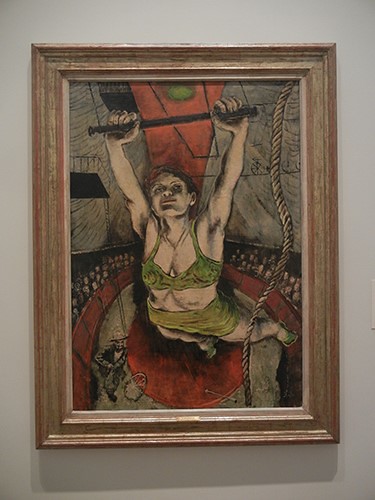
Woman on Trapeze, 1946, Karl Zerbe
My second favorite, the raison d'être for my visit to this museum, was a site-specific installation by Teresita Fernández (born 1968), Stacked Waters (2009), tiles on the four walls of a large rectangular hall with some loggia arches at the base of one of the long walls, and it was as becalming as Woman on Trapeze was disturbing.
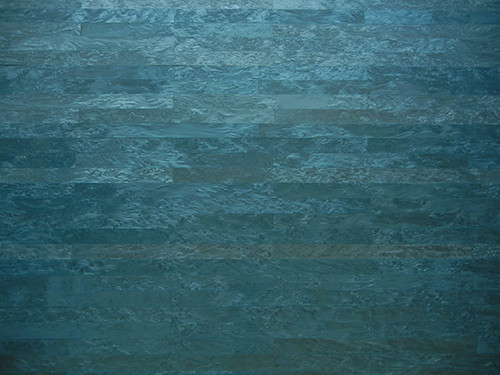
Detail of Stacked Waters, 2009, Teresita Fernández
Upon close inspection, those tiles had a look of shining plastic, with patterns of swirling clouds or waves, or like a glimpse of deep sea or the germinating universe. Those tiles, banded together to form horizontal layers in alternately greenish blue and various shades of pale gray colors, and as a whole, looked like cross-section of geological deposits, but with candy-like luminosity. Liquid deposits. Those layers also had different heights, with darker layers grew taller as they approached to the base of the walls, created a vision of gradually settling down, yet never completing such process.
Surrounded by such four shimmering walls, one felt breathless, as if immersed in the depth of cool and hushing water, soundless, motionless, and one would finally be deeply moved, as if some truth of universe had been revealed in front of the incredulous eyes.
It was wonderful to be there alone, to feel the refreshing emptiness; and it was great to be with other visitors, friends or strangers alike, to see how people glad about, like oblivious fish, utterly at home, yet strangely out of place, and utterly entranced.
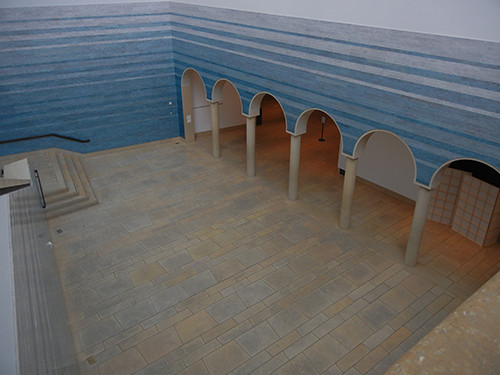
Stacked Waters, 2009, Teresita Fernández
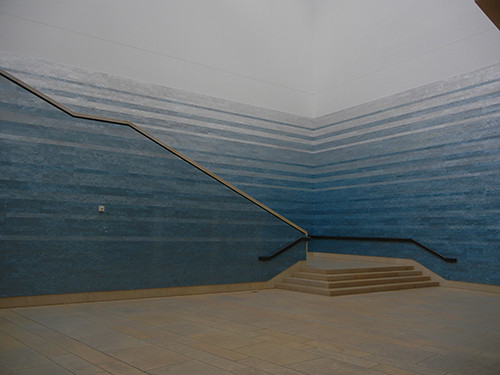
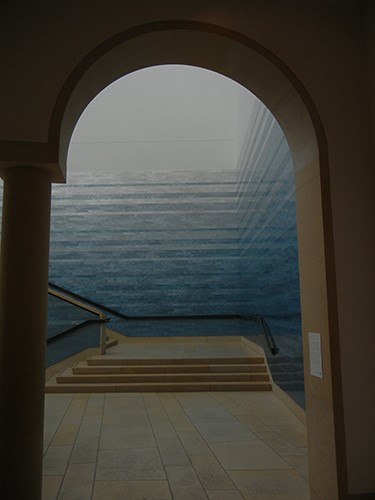
My Favorite Museum Collection Series
<< My Favorite Museum Collection Series 157: My Favorite Paintings at Norton Simon Museum, Pasadena
List of My Favorite Artworks in the Museums I've Visited
Other Related posts on Art · 文化 · Kunst:
- Blanton Museum of Art, The University of Texas at Austin
- Wonderful Food Experiences in Austin, Texas
- Texas State Capitol in Austin
- My Favorite Sculptures at Institut für Klassische Archäologie, Karl-Franzens-Universität Graz
- The Museum of Contemporary Art (MOCA) in Los Angeles
- Brand New Contemporary Art Museum - The Broad Museum in Los Angeles





No comments:
Post a Comment